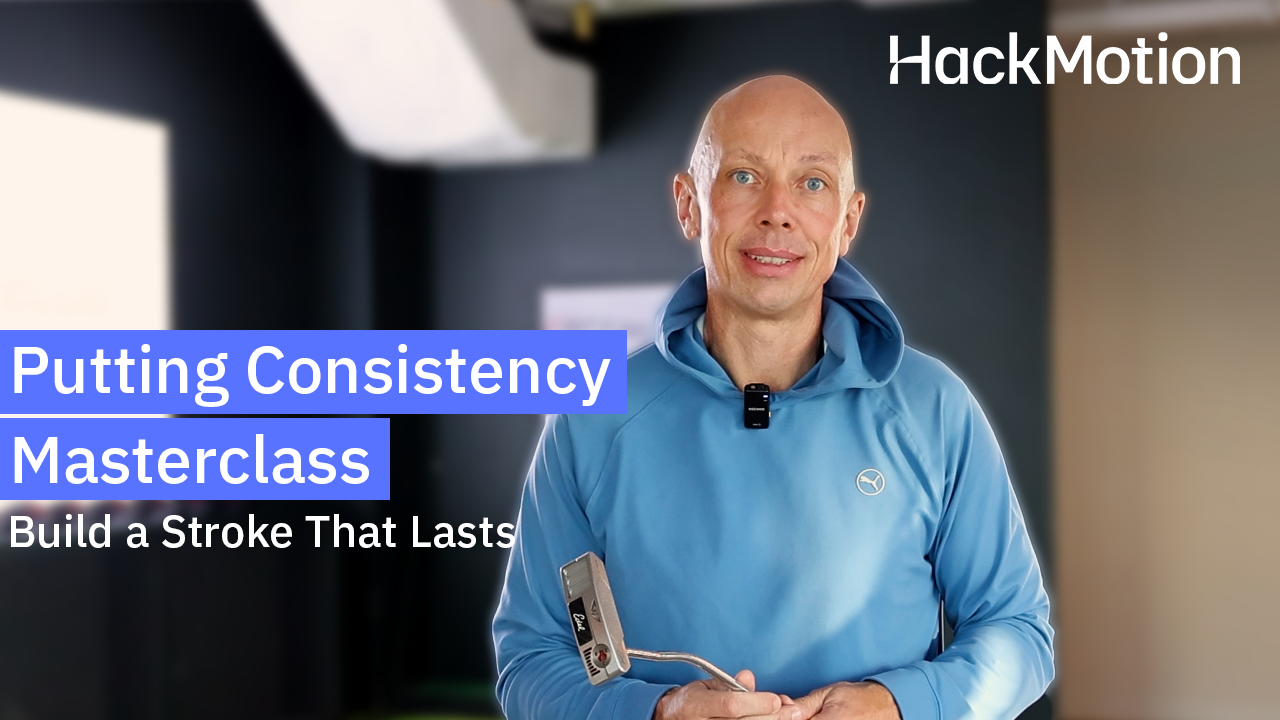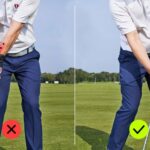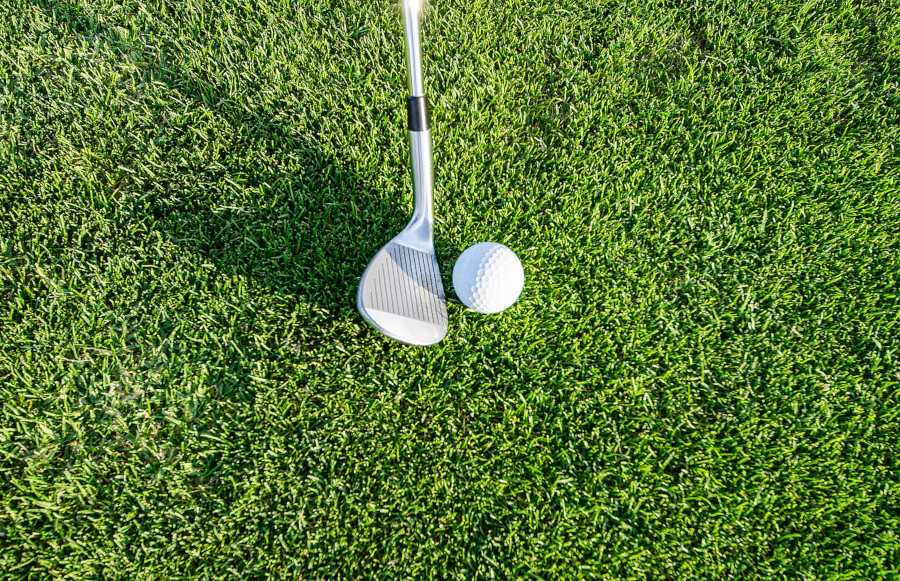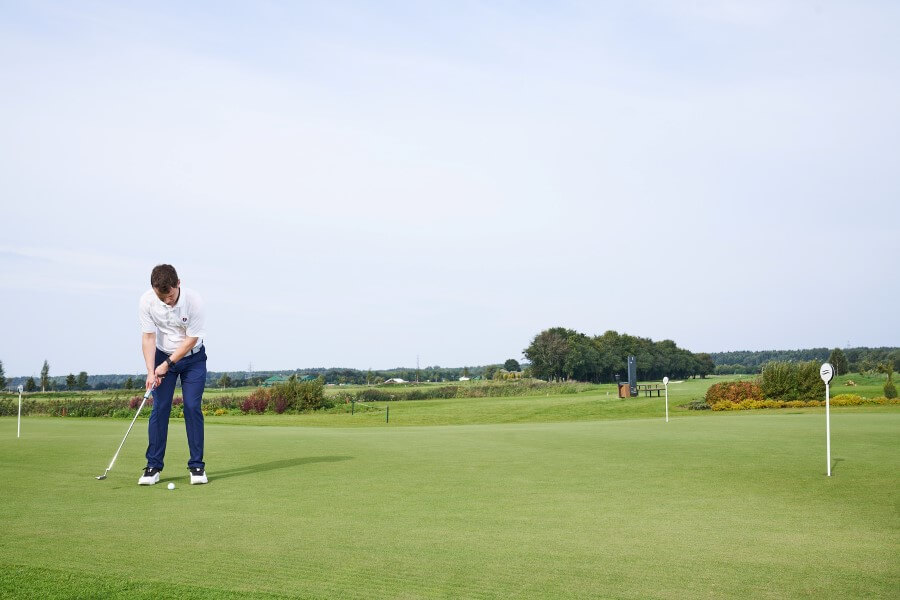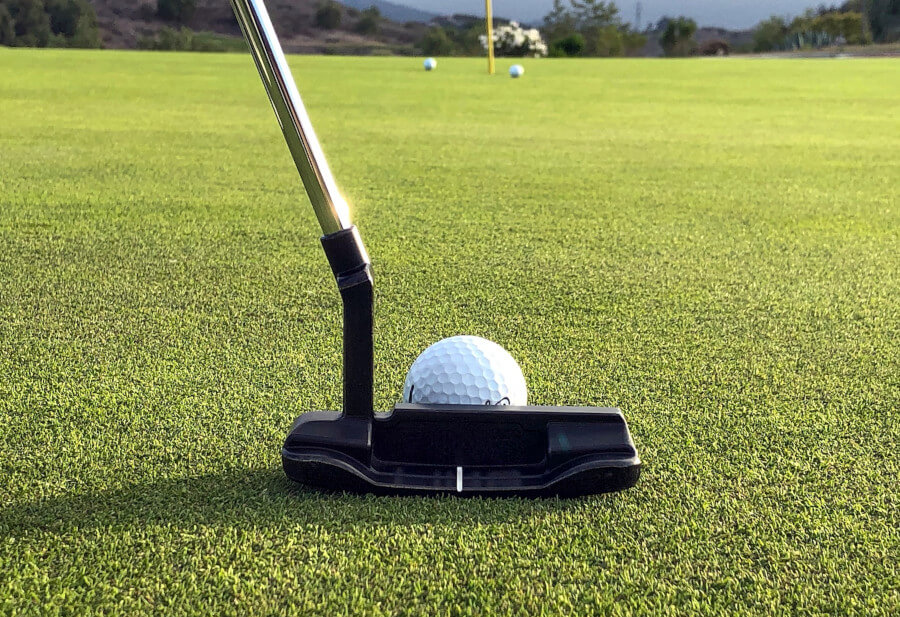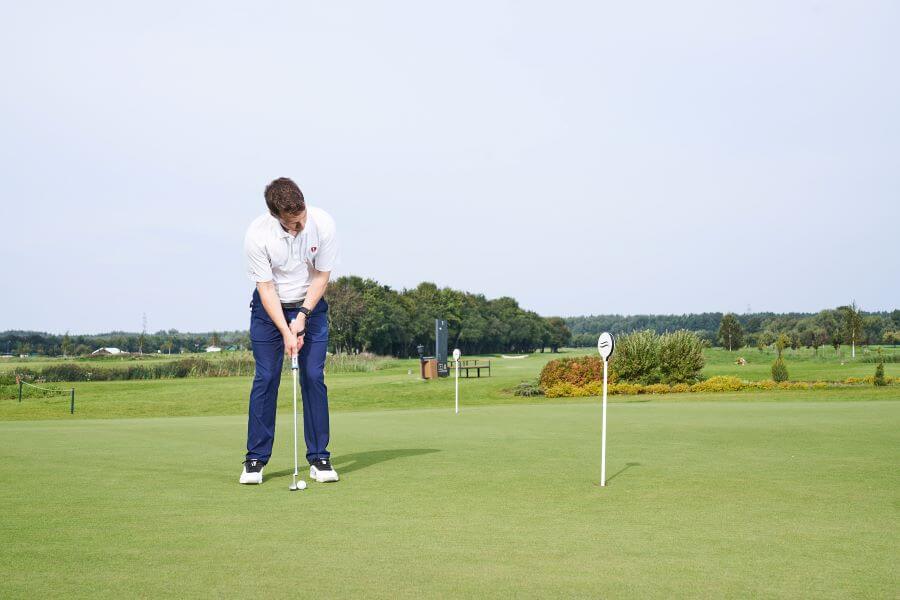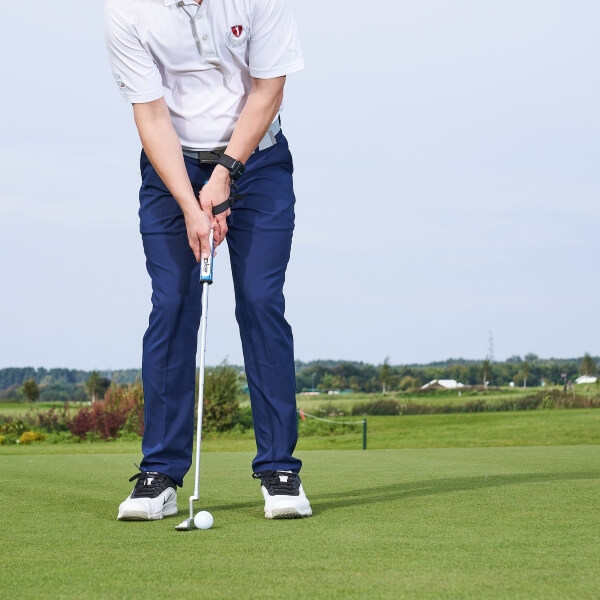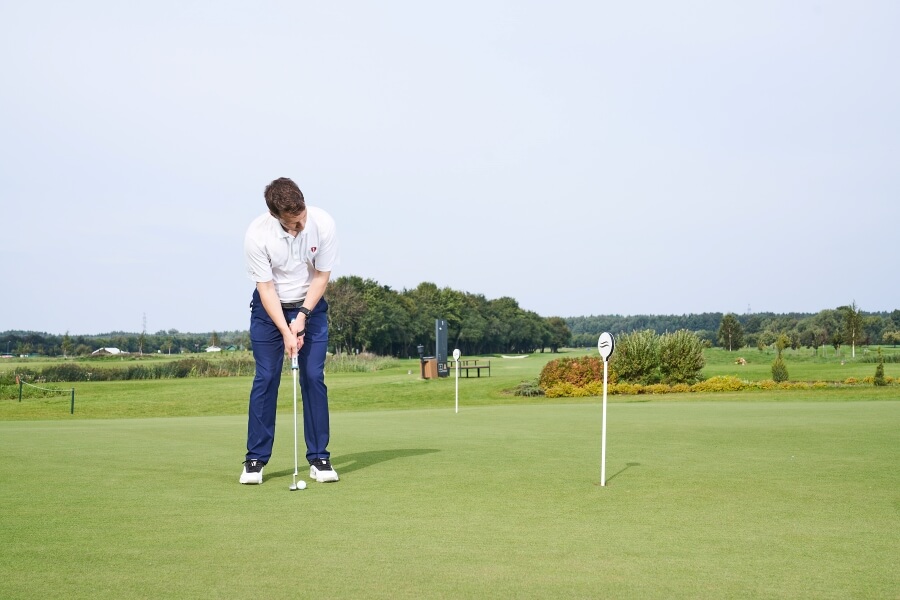How to Hole More Putts: 5 Putting Tips & Drills That Work
You can hit solid drives and solid irons all day, but if you’re consistently walking off the green with a three-putt, you’re giving away strokes you can’t afford.
Putting is what separates an average round from a great one. It’s also the part of the game most golfers ignore until it’s already costing them.
If you want to break 90 or even 80, you need to start making more putts inside 10 feet and stop wasting chances after hitting the green in regulation.
The good news? You don’t need to overhaul your entire stroke. A few targeted changes and smarter practice can make a big difference.
How to Make More Putts (Key Takeaways)
Here are the most important things to remember about how to improve your putting stroke. If you are really working on improving, keep these close throughout the process!
- Wrist flexion and extension impact putter control and launch angle.
- Avoid excessive ulnar or radial movement during your stroke—stability is key.
- Unwanted wrist rotation causes pushed or pulled putts.
- Transitioning with the trail arm too early can close the putter face.
- Drills using simple tools like chopsticks and coins can drastically improve feel and consistency.
5 Tips to Hole More Putts Consistently
Use a Neutral Grip
The grip is often overlooked, but it’s where face control begins. A neutral grip promotes a more consistent stroke and helps keep the putter face square through impact.
Here’s how to check and feel a proper neutral grip:
- Place the putter grip between your palms, so both hands are facing each other.
- Apply light pressure to maintain control without tension.
- Make a few practice strokes—you should feel the putter stay naturally on plane.
To see what happens with a poor grip:
- Rotate your trailing palm so it faces the back of your lead hand (a common mistake).
- Try stroking the putter again, you’ll likely feel instability and see the face drift off line.
A neutral grip minimizes wrist manipulation and makes it much easier to control the starting line of your putts.
Lead Wrist Flexion Through the Stroke
Your wrists are the engine of your putting stroke. Making contact with the ball at the wrong angle is the difference between a smooth rolling putt and a bobbling ball that falls short of the target.
A delofted putter face delivers more compression to improve your ball speed and distance control on the green.
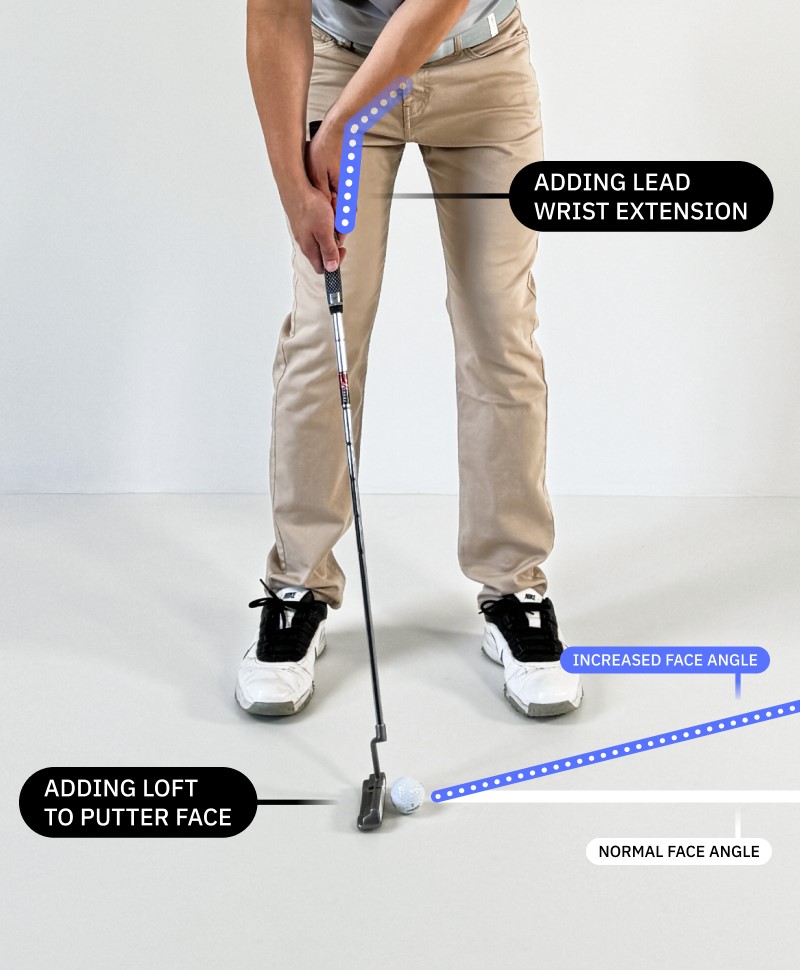
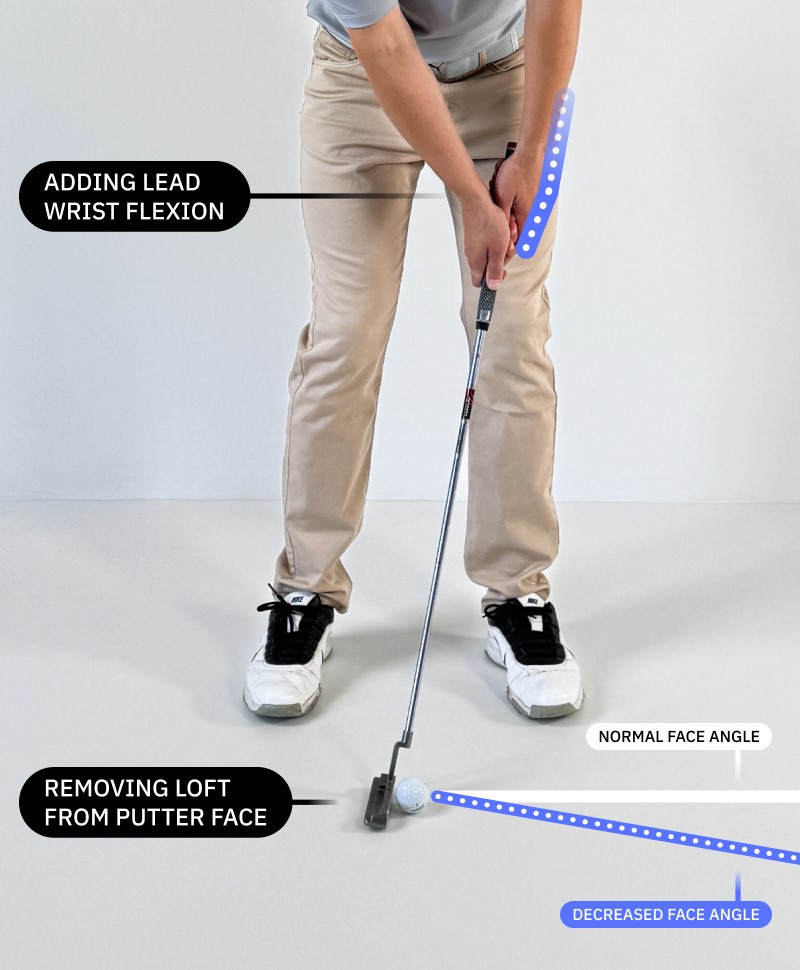
The HackMotion Putting mode guides your wrist action, dictating if each stroke is in range or not. Following the data makes you more aware of your wrist position throughout the stroke, allowing you to build better muscle memory and consistency. The best putters are those who can repeat their stroke.
HackMotion Putting Flexion / Extension Drill
Get a feel for the wrist movement that controls your putter’s loft.
Reduce Ulnar or Radial Rotation
Most inconsistent putters use too much wrist hinge, either upward (radial) or downward (ulnar), during the stroke.
This subtle movement is likely something you don’t even realize you are doing.
The problem with excess ulnar or radial rotation is that it can twist the putter face, take it off line, and cause missed putts even from short range.
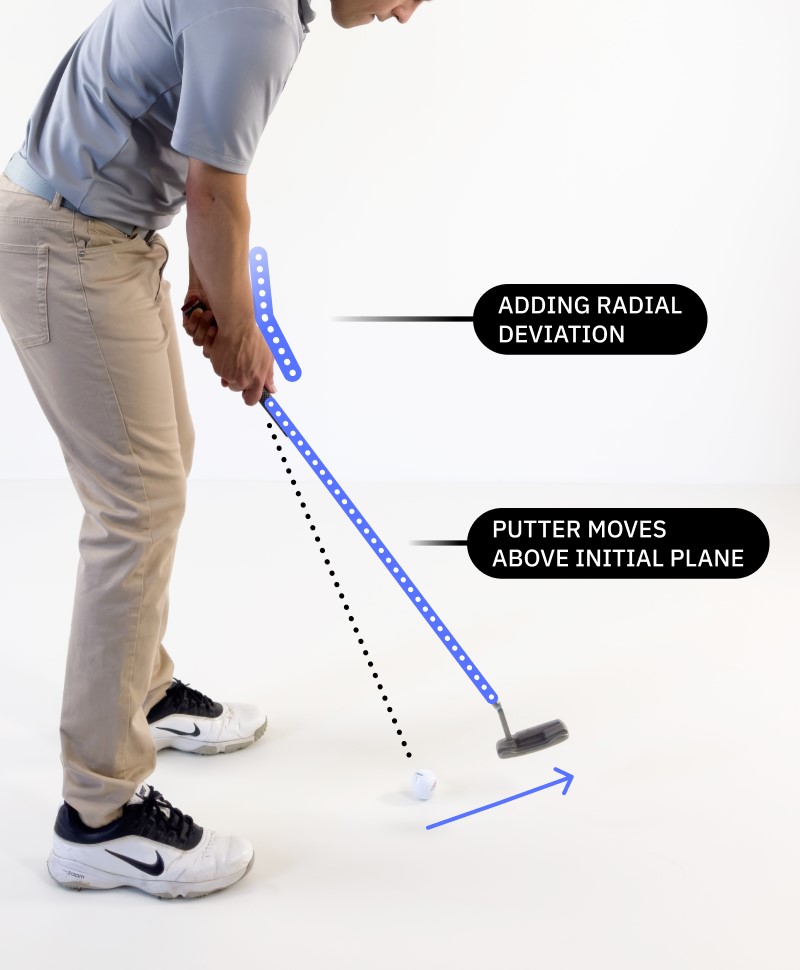

To fix this, you need to quiet the wrists and let your shoulders control the motion. One of the simplest ways to train that feel is with the Chopstick and Coin Drill, which teaches you to maintain a stable, connected stroke without unnecessary wrist movement.
Train a 2:1 Putting Tempo for Better Distance Control
If you struggle with distance control, your putting tempo may be the reason.
Great putters share a common rhythm; their backswing takes about twice as long as their downswing, a ratio known as 2:1. Getting this timing right creates a smoother stroke and more consistent roll.
Using HackMotion, you can measure your tempo precisely and get real-time feedback on whether you’re rushing or hesitating in your stroke.
The 2:1 tempo isn’t about being perfect—it’s about finding a feel you can repeat across all putt lengths.
How to Practice Putting Tempo with HackMotion
- Open the HackMotion app and turn on the built-in metronome feature (default is 75 BPM).
- Start by practicing strokes without a ball, matching your backswing and follow-through to the metronome beats: one-two… one.
- Focus on smooth rhythm, not power, the feel of matching the beats is what builds consistency.
- Once the motion feels natural, add a ball and hit putts of different distances using the same tempo.
- Keep your timing steady and vary only the length of the stroke to control distance.
- Watch your HackMotion data after each putt to refine and reinforce that 2:1 ratio.
Aim the Putter Face with Precision
All the work you’ve done on your stroke and wrist control won’t matter if you’re not aimed correctly. Even a perfect stroke will miss if the face starts off pointing in the wrong direction.
Here’s how to aim the putter face more effectively:
- Use a chalk line or alignment string on the practice green. Set it up on a straight putt and align your putter face square to the line at address.
- Place an alignment stick or club shaft behind the ball, pointing directly at your target. Step back and check if your face is square to that line.
- For indoor or tech-focused practice, use a putting laser or a mirror with a centerline to verify where your face is aimed before making the stroke.
Once you’re aimed correctly, trust your read and start your stroke. Use this routine in practice so it becomes second nature on the course.
Simple Drills to Sink More Putts
Here are a few more drills to help improve your putting stroke and stop guessing on the greens!
Train smarter at home—putting, short game, and full swing. Start with these putting drills to practice at home, then expand your routine with our full guide on how to practice golf at home.
Chopstick and Coin Drill (Wrist Awareness)
This drill gives you immediate feedback on wrist movement during the putting stroke.
It helps you recognize when you’re using too much ulnar or radial deviation and trains a quieter, more consistent motion. You’ll need two alignment sticks to complete it.
Chopstick and Coin Drill – Step by Step
- Slip a chopstick (or headband) under your HackMotion wristband so it runs up your forearm.
- Grip the putter with your lead hand in a neutral position.
- Place a coin between the chopstick and the base of your thumb.
- Make a few putts and try to keep the coin in place throughout the stroke.
- If the coin drops, you’re using too much ulnar deviation; if it presses into your skin, you’re adding too much radial deviation.
- Repeat to develop better awareness and control.
Flexion / Extension Putting Drill
This drill helps you control loft and start direction by limiting excess wrist flexion and extension.
The goal is to keep those movements within 2 degrees throughout your stroke.
HackMotion Putting Flexion / Extension Drill
Get a feel for the wrist movement that controls your putter’s loft.
HackMotion Putting Flexion / Extension Drill – Step by Step:
- Put on your HackMotion sensor and set up to a standard-length putt.
- Roll a putt while trying to keep your lead wrist steady—no scooping or flipping.
- After the stroke, review your flexion/extension graph in the HackMotion app.
- Check that your movement stayed within 2 degrees during the entire stroke.
- Repeat until the motion becomes consistent and repeatable.
Ulnar / Radial Putting Drill
This drill helps control the stroke path by minimizing unwanted upward or downward wrist motion.
Keeping ulnar and radial deviation stable makes your putting stroke more consistent.
HackMotion Putting Ulnar / Radial Drill
Get a feel of the wrist movement that controls the plane of the putter.
HackMotion Ulnar / Radial Putting Drill – Step by Step:
- Wear your HackMotion sensor and take your normal putting setup.
- Make a stroke while focusing on keeping your wrists quiet—no rising or dipping motions.
- After each putt, check your HackMotion graph for ulnar/radial deviation.
- Your goal is to maintain the angles within 2 degrees throughout the stroke.
- Repeat to groove a more stable putting path and face angle control.
Final Thoughts
The difference between a pulled putt and one that drops in the bottom of the cup is largely wrist action.
Know that you know how to hole more putts, you will reduce ulnar and radial deviation in the stroke and enjoy more consistent strikes on the green.
Using the HackMotion will help you identify what wrist action you are using and how you can improve it. Over time, you’ll gain more control of the putter face, and hole more putts that would previously shave the cup.
